Bilbao Spain: Uncover Northern Spain’s Crown Jewel Where Frank Gehry’s Vision Sparked a City’s Rebirth
We discover the best of Basque Country visiting Bilbao Spain and explore the stunning architecture, riverfront areas to the Old Town and then to the more modern areas with street art and the stunning Guggenheim Museum. Bookmark this easy guide to show you the main attractions, the Old Town areas and architecture, Food and tapas scene and street art and modern day lifestyle is celebrated.
I never think that industrial cities can be cosmopolitan but Bilbao, Spain exceeds all expectations of old and new combined, sophisticated and yet so historic to visit. Bilbao separated in two by the Nervion River exudes a hip and artsy vibe walking along the riverfront, checking out all the amazing outdoor sculpture and the ultra modern Bilbao Guggenheim Modern Art Museum. If you keep walking further back the riverfront, eventually you get into the Old Town with its narrow streets, gorgeous historic buildings and architecture and beautiful squares surrounded by Pintxos or local Tapa bars.
I love walking through the many promenades and enjoying all the fantastic vista points, architecture and scenes you pass along the way and Bilbao delivers all that and more. I also found that the temperatures outside are comfortable compared to the hotter interiors, the humid coastlines during the later spring to full summer season. This makes Bilbao an attractive option for visitors looking for comfortable weather traveling in Northern Spain when the rest of the country warms up with extreme heat.
This short guide shares the best places to explore, attractions to visit, fantastic museums, historic sites, fun plazas to hang out in and wonderful cuisine to enjoy.
Check out all my favorite things to do in Bilbao below and you’ll be glad that you spent some time here to discover the magic of this city.
Where is Bilbao located
Bilbao is located in northern Spain, within the autonomous Basque Country, not far from the Bay of Biscay. It’s the largest city in the region and sits along the banks of the Nervión River, surrounded by green hills and a mix of industrial and mountainous landscapes. The city is about an hour’s drive from the French border and is well connected to other parts of Spain by rail and highway. Though historically an industrial hub, Bilbao has reinvented itself in recent decades with modern architecture, cultural institutions, and a strong culinary scene.
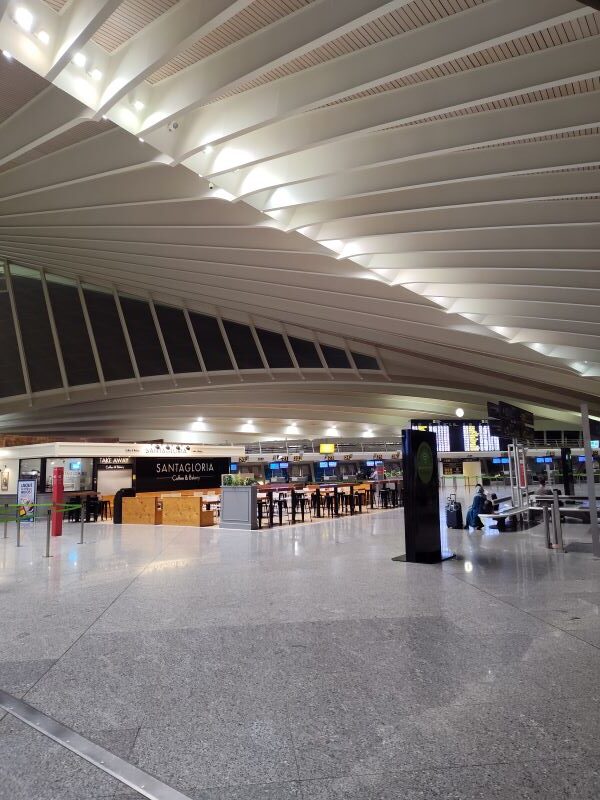
How to get to Bilbao
There are many options to get to the city by air, train or extensive bus services that cover the region. Bilbao is well connected throughout the country and even internatonal locations to the city by various transport options below:
By Air
- Bilbao Airport (BIO) is the main gateway, located about 12 km (7.5 miles) from the city center.
- Direct flights from major European cities like Madrid, Barcelona, Paris, London, Frankfurt, and Amsterdam.
- Connecting flights from international hubs like New York or Dubai via Madrid or Barcelona.
By Train
- Renfe operates long-distance and regional trains to Bilbao.
- From Madrid: around 5 hours.
- From Barcelona: approximately 6.5–7 hours.
- FEVE narrow-gauge trains connect smaller towns and coastal routes in northern Spain.
By Bus
- ALSA and other bus companies run frequent services to Bilbao from major Spanish cities.
- Budget-friendly option with good comfort.
- Routes from Madrid, Barcelona, San Sebastián, Santander, and other regional hubs.
By Car
- Highway access via AP-8 and A-68.
- From Madrid: ~4 hours.
- From San Sebastián: ~1 hour.
- Scenic drives through Basque Country, especially along the coast.
By Ferry (from the UK)
- Nearby Santander (1.5 hours away) and Bilbao port itself have ferry services from Portsmouth with Brittany Ferries.
- Convenient for travelers bringing their own vehicle from the UK.
Getting into the City
- From the airport: Bizkaibus A3247 to the city center (20–25 minutes).
- Taxis and rental cars also available.
- Metro Bilbao, trams, and local buses make it easy to get around once you arrive.
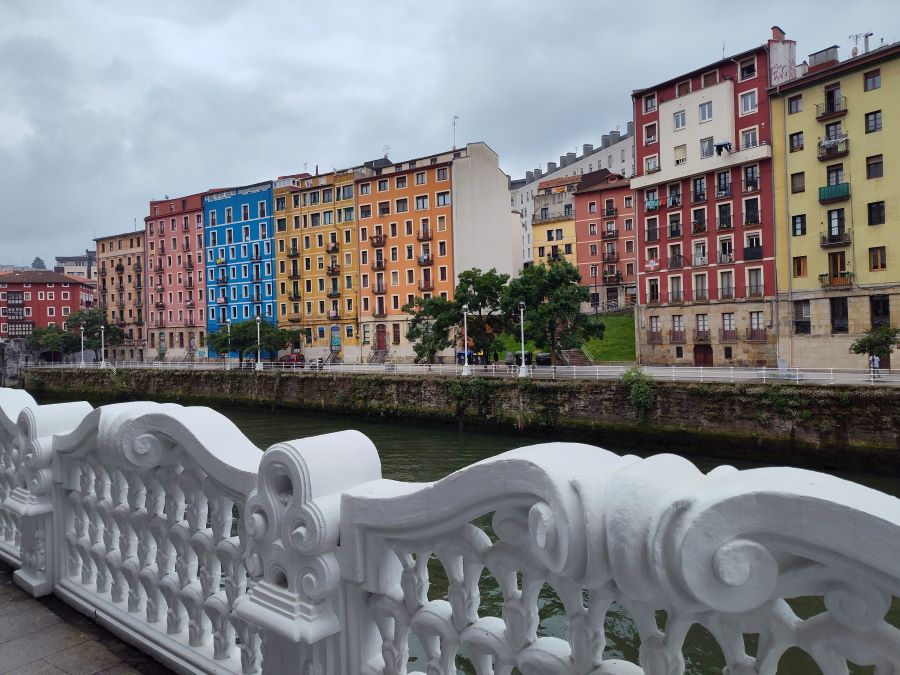
A brief history about Bilbao
Bilbao was officially founded in 1300, though the area had been settled long before due to its strategic location along the Nervión River. It quickly grew into a significant commercial port, benefiting from trade and shipbuilding, especially during the height of Spain’s maritime empire. By the 19th and early 20th centuries, Bilbao became a powerhouse of industry, particularly in steel, iron, and shipbuilding, which shaped its identity for decades. The city suffered during the Spanish Civil War but rebounded as a key economic center. In the late 20th century, faced with industrial decline, Bilbao underwent a major transformation focused on culture, architecture, and services—symbolized by the opening of the Guggenheim Museum in 1997, which helped rebrand it as a modern, forward-thinking city.

Top attractions and places to visit in Bilbao
If you are looking for the top attractions and places to visit around Bilbao, I have you covered with these fantastic sites and places to visit in Bilbao, Spain:
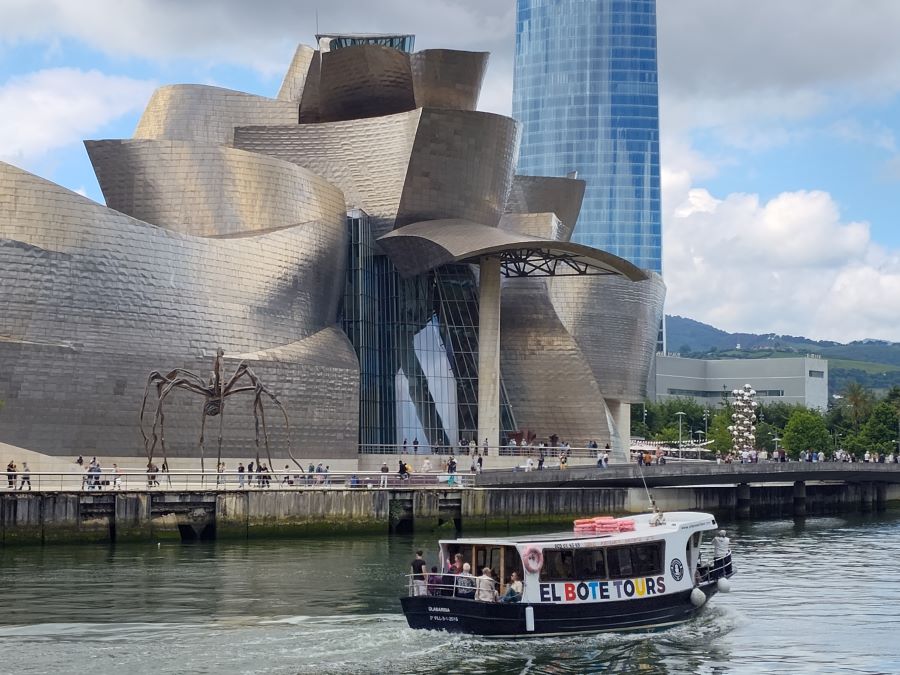
1. Guggenheim Museum Bilbao
The Guggenheim Museum Bilbao is one of the most striking examples of modern architecture in the world, designed by Frank Gehry and opened in 1997. Its curving titanium-clad exterior, set along the Nervión River, makes it a landmark in both design and innovation. Inside, the museum houses an impressive collection of contemporary and modern art, with large-scale installations and rotating exhibitions that often push creative boundaries. The building itself feels like a piece of art, and the experience is just as much about wandering through its dynamic spaces as it is about the art on display. It’s a cultural centerpiece for the city and played a major role in revitalizing Bilbao into a vibrant arts destination.
I found walking around the building showcases many other wonderful features like the impressive giant scale sculptures, nice vistas from the Nervion River and other vantage points along with a wonderful riverfront promenade to explore and walk around.
Check out the Guggenheim Bilbao website here for more details and entry.
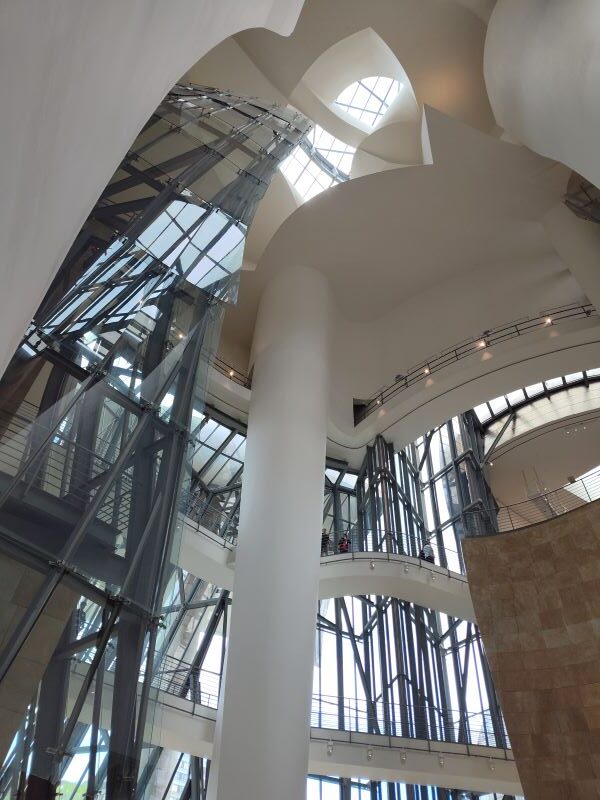
Interior art galleries at the Guggenheim Museum
Check out this video tour of the Guggenheim Museum below
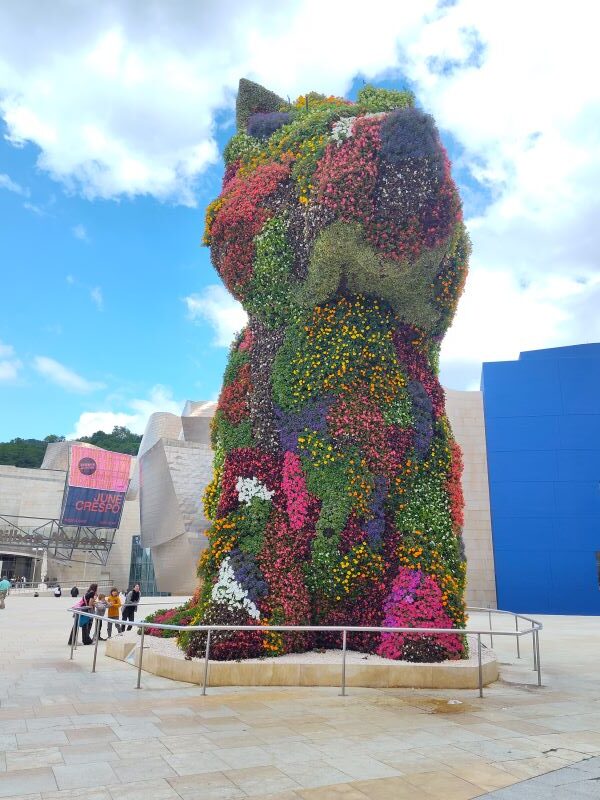
Outdoor art installations at the Guggenheim Museum
- Iconic contemporary art museum designed by Frank Gehry
- Known for its titanium curves and modern installations
- Major contributor to Bilbao’s cultural and urban revival
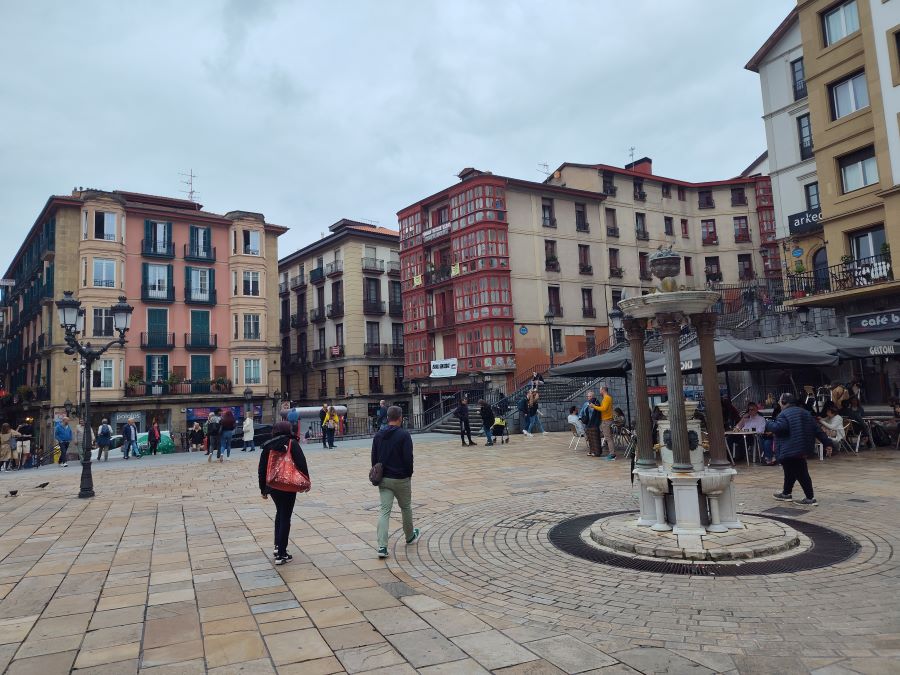
2. Casco Viejo, the Old Town of Bilbao
Casco Viejo, the Old Town of Bilbao, is the historic heart of the city, full of charm, local color, and a strong sense of place. Its narrow, winding streets are lined with centuries-old buildings, lively bars, small boutiques, and traditional shops that give it an authentic, lived-in feel. The area is known for its siete calles (seven original streets), but the district has grown into a maze of plazas and hidden corners where locals gather for pintxos and conversation. Key sights like the Santiago Cathedral and the bustling Ribera Market add to its appeal, while the energy here shifts naturally from daytime strolls and shopping to an evening buzz of music and food. It’s a place that invites slow wandering and gives a real taste of Bilbao’s past and present.
It’s fun to explore all the narrow streets which opens up into beautiful squares, stunning architecture and shops that may draw your attention to come in an explore. Not to mention the many Pintxos bars and restaurants promoting delicious local cuisine and small tapa like eats to experience.
Here’s a video tour of the Old Town of Bilbao below
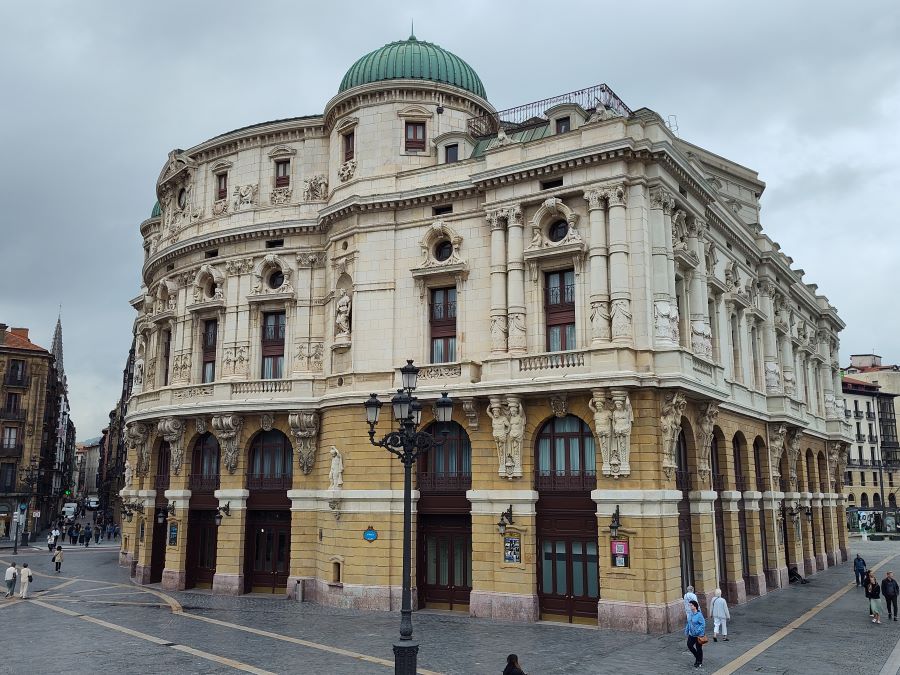
The Opera house at Casco Viejo, the Old Town of Bilbao
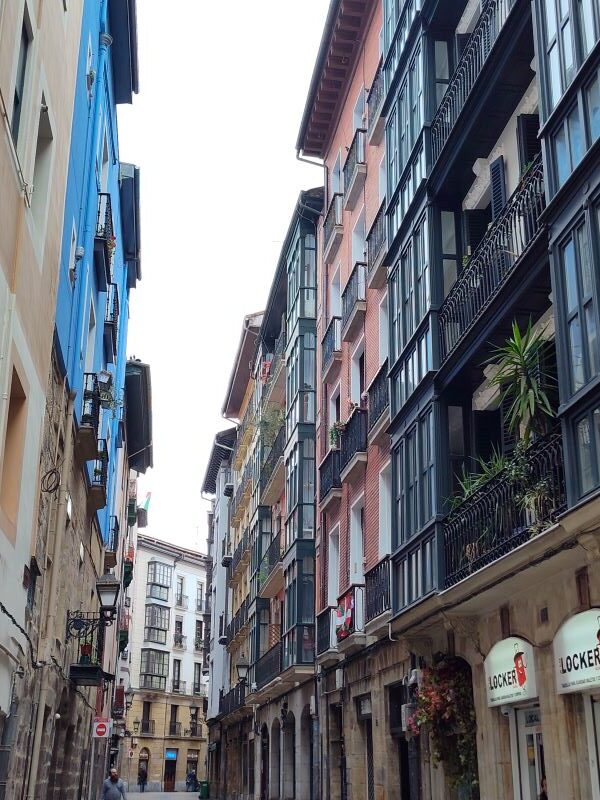
Exploring the narrow streets of the Old Town
- Historic heart of the city with narrow medieval streets
- Features Plaza Nueva, traditional taverns, and local shops
- Great for pintxos (Basque tapas) hopping
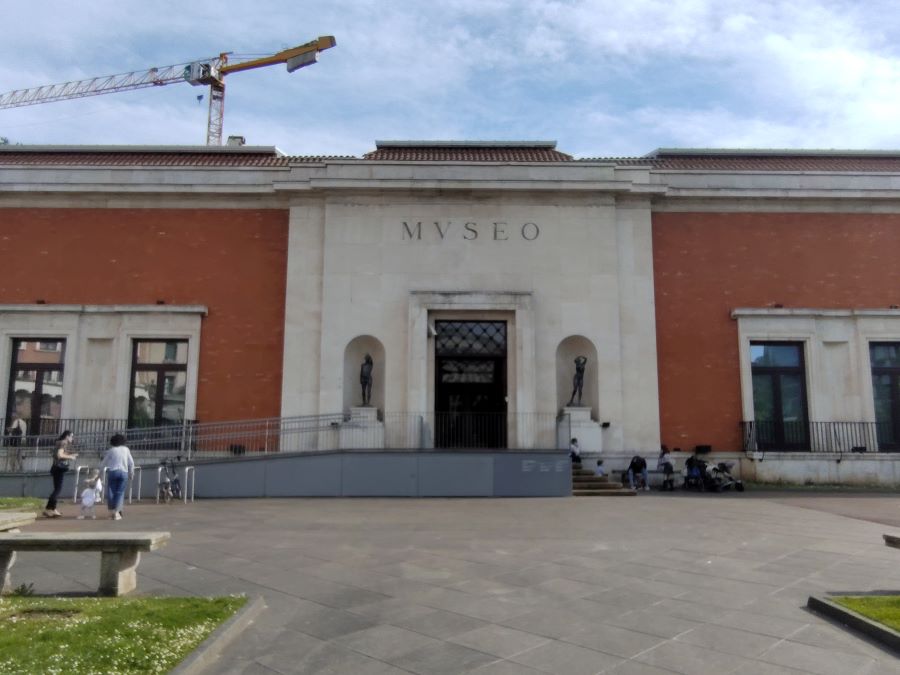
3. Bilbao Fine Arts Museum
The Bilbao Fine Arts Museum is a well-regarded cultural institution that offers a broad and balanced collection spanning from the 12th century to contemporary works. Unlike the flashier Guggenheim, this museum leans into depth and diversity, showcasing Spanish and Basque art alongside major European pieces. Its layout blends classical and modern architecture, making the experience both visually and intellectually engaging. Visitors can expect works by artists like Goya, El Greco, Zurbarán, and more modern figures such as Chillida and Bacon. The museum is thoughtfully curated and less crowded, allowing time and space to really take in the art. It’s a rewarding stop for those interested in the quieter, richer layers of the city’s artistic identity.
Surprisingly, I found the Bilbao Fine Arts Museum easy to navigate and filled with interesting collections along with a rotating series of exciting visual arts presentations that were provocative and interactive, definitely worth a visit in this historic architectural building.
- One of Spain’s top art museums with works from the 12th century to modern day
- Strong collections of Spanish and Basque artists
- Located in Doña Casilda Iturrizar Park
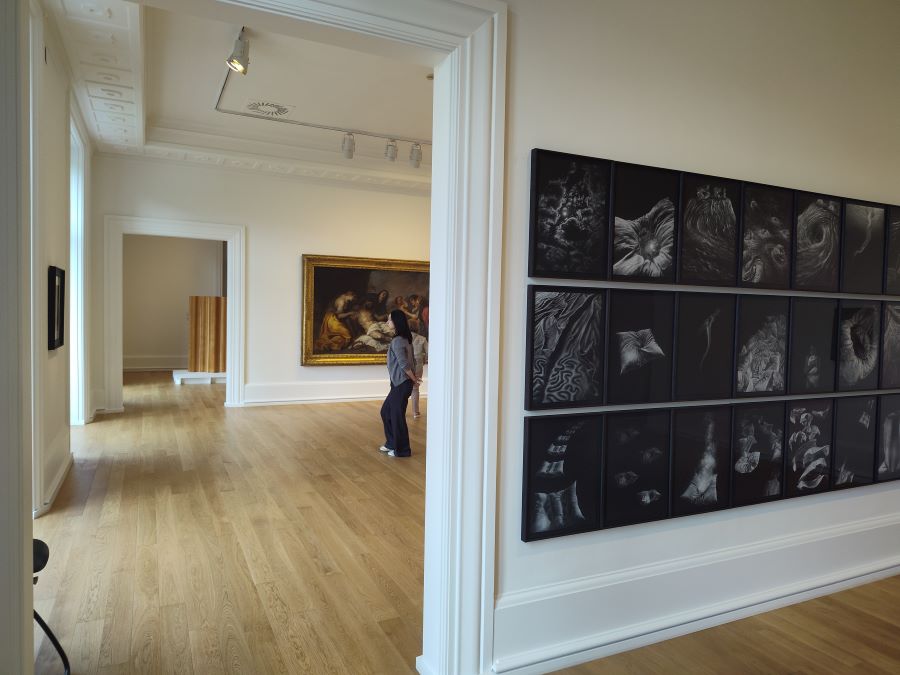
Bilbao Fine Arts Museum interior galleries
Check out the Bilbao Fine Arts Museum website here for more details and entry.
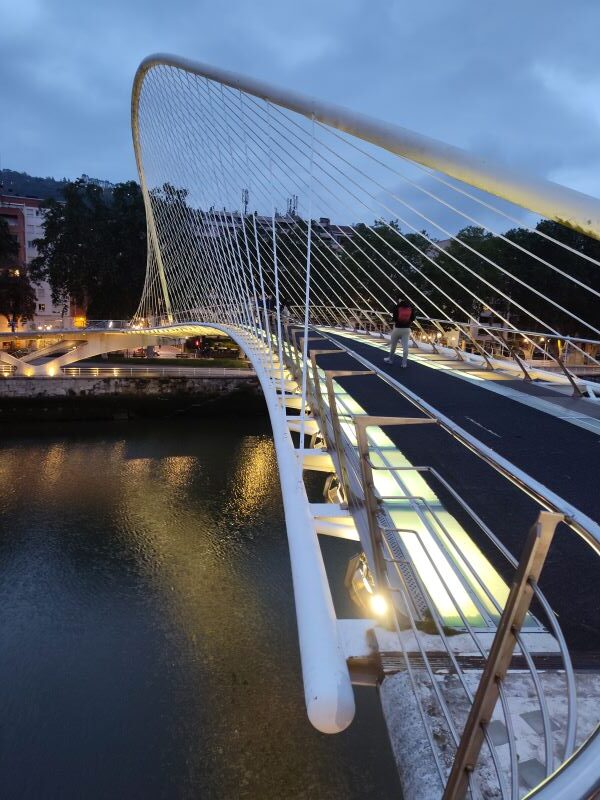
4. Zubizuri Bridge
Zubizuri Bridge, also known as Campo Volantin Bridge, is a modern landmark in Bilbao designed by Santiago Calatrava. Its distinctive white, arched structure gracefully spans the Nervión River, serving as a functional link between different parts of the city while adding a touch of contemporary design to the urban landscape. The bridge features a combination of solid and transparent elements that create interesting patterns of light and shadow as the day progresses. It offers pedestrians a unique pathway that merges practical connectivity with a refined architectural statement. In this way, Zubizuri represents a clear shift towards innovative urban planning and continues to enhance Bilbao’s reputation for embracing modern design in public spaces.
I crossed this bridge many times during the day and night and enjoyed walking through and checking out the river views. It is also a fantastic bridge to photograph with its future forward design.
- Pedestrian bridge by Santiago Calatrava spanning the Nervión River
- Notable for its sleek white design and glass walkway
- Offers great views of the river and cityscape
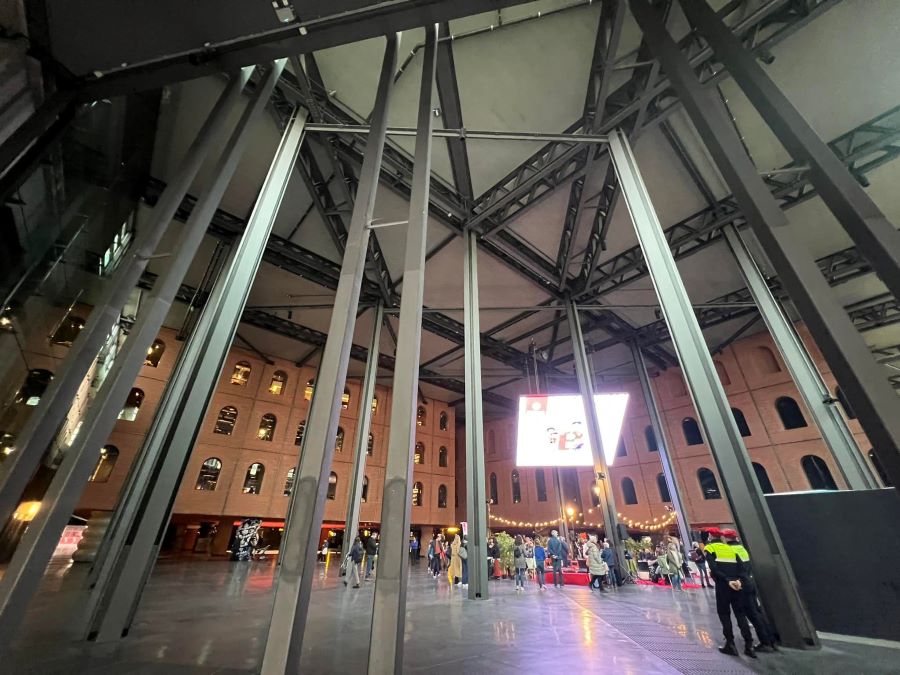
5. Azkuna Zentroa (Alhóndiga Bilbao)
Azkuna Zentroa, formerly known as Alhóndiga Bilbao, is a cultural and community hub housed in a renovated early 20th-century wine warehouse. Redesigned by French designer Philippe Starck, the building blends its original industrial facade with bold, imaginative interior spaces. Inside, you’ll find a mix of art galleries, a cinema, a library, cafes, and even a rooftop swimming pool with a glass floor that looks down into the building. The space is supported by a variety of columns in different styles, creating a playful and eclectic atmosphere. Azkuna Zentroa is more than just an arts center—it’s a gathering place for locals and visitors, offering a mix of creativity, leisure, and everyday life under one roof.
I love to see old buildings and warehouses reposed into innovative multi-use centers and the Azkuna Zentroa offers a variety of many public uses in a fun and beautiful environment.
- Former wine warehouse turned into a cultural and leisure center
- Designed by Philippe Starck
- Hosts exhibitions, cinema, gym, rooftop pool, and restaurants
Here’s a quick video overview of the Alhondiga Bilbao below
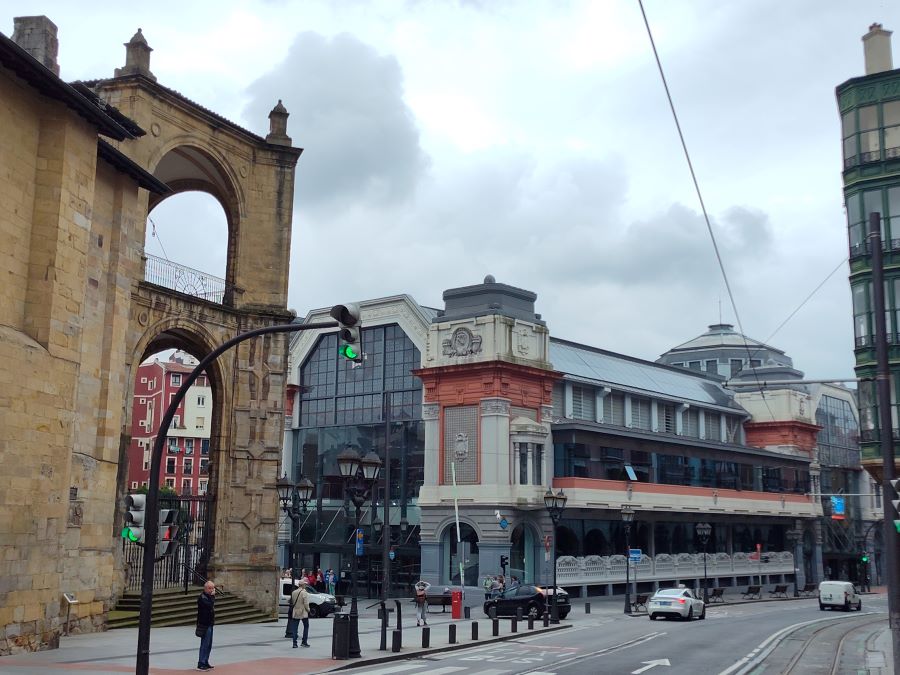
6. Mercado de la Ribera
Mercado de la Ribera is a cornerstone of Bilbao’s culinary scene and a testament to the city’s architectural heritage. Spanning over 10,000 square meters, it holds the distinction of being Europe’s largest covered market, a title recognized by the Guinness Book of Records in 1990 . Designed by architect Pedro Ispizua and inaugurated in 1929, the market showcases an Art Deco style with expansive open spaces, high ceilings, and stained-glass windows that flood the interior with natural light .
Located along the Nervión River in the heart of the Old Town, the market is organized across three levels: the ground floor is dedicated to fresh fish and seafood, the first floor houses meat and deli products, and the top floor offers a vibrant array of fruits, vegetables, and local specialties . Beyond its traditional market offerings,
I found that the downstairs area of the Mercado de la Ribera filled with modern culinary trends in a food court style that features a variety gastro bars and a jazz café that hosts live music events. This blend of historic charm and contemporary flair makes it a must-visit destination for both locals and travelers seeking an authentic taste of Bilbao. If you’re hungry and looking for some dining options and bars where you can see the food displayed for sale, then check out the downstairs food court area.
Here’s a video tour of the La Ribera Market located in the Old Town center of Bilbao below

Pintxos bars at Mercado de la Ribera
- Large riverside market with fresh produce, meats, and local foods
- Dating back to the 14th century but modernized for today’s visitors
- Also home to food stalls and casual dining spots
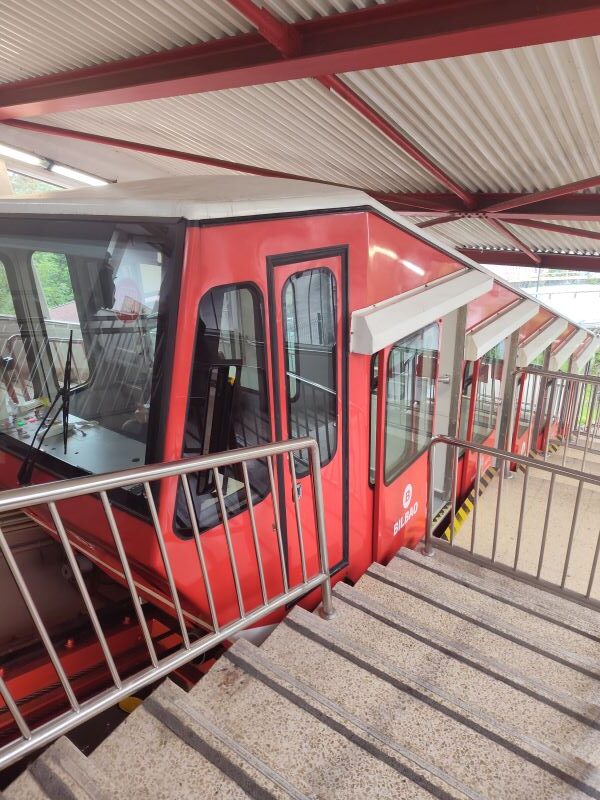
7. Funicular de Artxanda
The Funicular de Artxanda, affectionately known as “El Funi,” has been a staple of Bilbao’s landscape since its inauguration in 1915. This short, three-minute ride connects the city center with Mount Artxanda, ascending 226 meters over a 770-meter track with a maximum gradient of nearly 45% . More than just a mode of transport, it offers panoramic views of the city, making it a favorite among locals and visitors alike. At the summit, you’ll find green spaces, walking paths, and several restaurants, including the renowned Txakoli Simon, known for its excellent grilled meats . The funicular operates every 15 minutes, with extended hours during the summer months, providing both a practical and scenic route to one of Bilbao’s most impressive viewpoints.
I completely enjoyed taking the funicular up and checking out all the fantastic vistas and seeing all the main attractions to the river and all the way to the ocean areas. My favorite time is to visit late afternoon into sunset to capture some amazing views and photographs during the end of day at the summit of Bilbao.
Here’s a fun video tour of the Funicular de Artxanda below
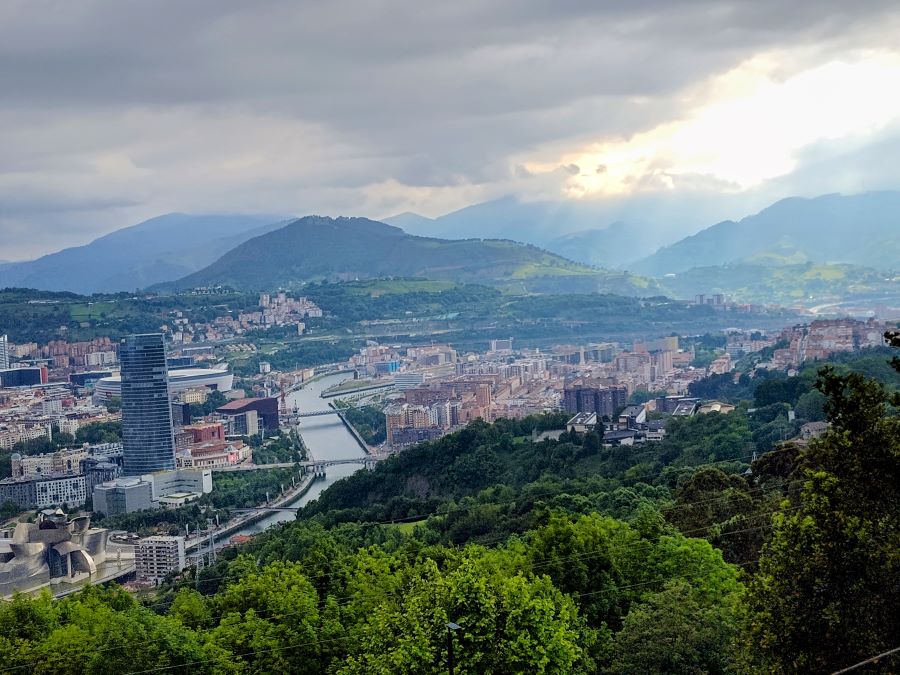
Views from above at Mount Artxanda,
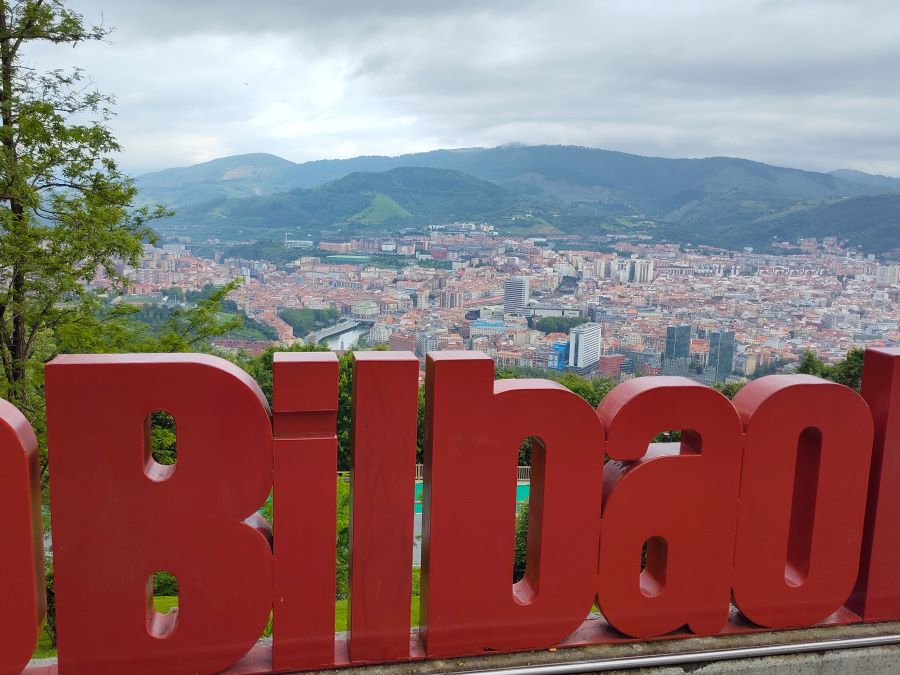
- Cable railway offering panoramic views of Bilbao from the top of Mount Artxanda
- Great spot for walking, relaxing, and taking photos
- Easily accessible from the city center
8. Basilica of Begoña
The Basilica of Begoña is one of Bilbao’s most important religious sites, perched on a hillside overlooking the city. Dedicated to Our Lady of Begoña, the patron saint of Biscay, the church has deep spiritual significance for locals and is a place of pilgrimage, especially during the October 11th festival in her honor. Built between the 16th and 17th centuries, the basilica features a mix of Gothic and Renaissance architectural elements, with a serene interior and a striking altarpiece that draws attention. It’s accessible via a scenic walk or a short ride on the Artxanda Funicular followed by a peaceful stroll. The location also offers a quiet escape from the city’s busier areas and a wide view over Bilbao, making it a spot where culture, faith, and a bit of nature come together.
- Important pilgrimage site dedicated to the patron saint of Biscay
- Located on a hill overlooking the city
- Combines Gothic and Renaissance architectural styles
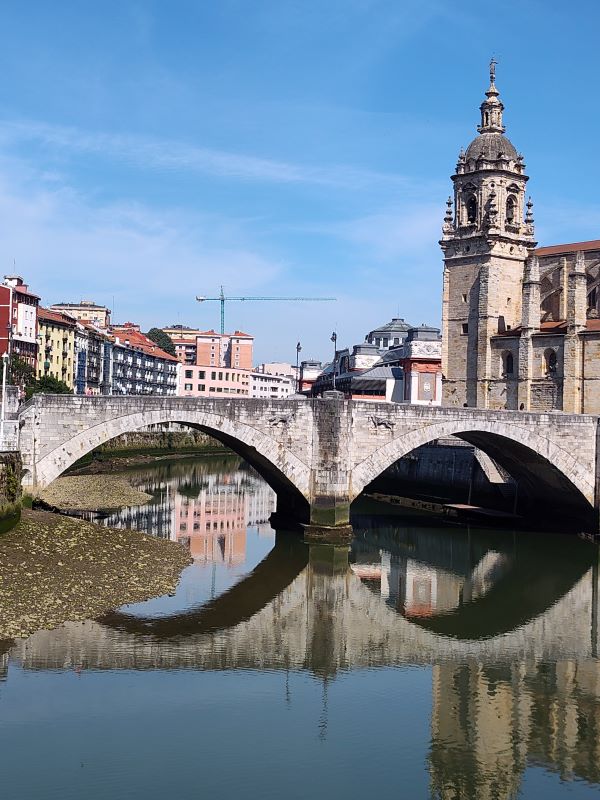
9. Estuary Walks & Riverside Promenades
Bilbao’s riverside promenades along the Nervión River offer a scenic and immersive way to experience the city’s blend of industrial heritage and modern transformation. The Paseo de Abandoibarra, once dominated by shipyards and factories, has been revitalized into a green corridor featuring contemporary architecture like the Guggenheim Museum, Iberdrola Tower, and Euskalduna Conference Centre, alongside public art installations such as Louise Bourgeois’ Maman and Anish Kapoor’s Tall Tree and the Eye . Across the river, the Paseo de Uribitarte connects to the Zubizuri Bridge, offering views of both historic and modern structures . Further along, the estuary leads to areas like Zorrotzaurre, a redeveloped district that retains elements of its maritime past . These promenades are lined with cafes, parks, and cultural landmarks, making them ideal for leisurely walks, cycling, or simply enjoying the evolving urban landscape of Bilbao.
It’s a wonderful experience walking through the newer parts of the Nervion and into the old town area with its unique narrow streets, Cathedral and many plazas to hang out in.
- Scenic walkways along the Nervión River
- Connect major landmarks and provide relaxed views of the city
- Popular with locals and visitors alike
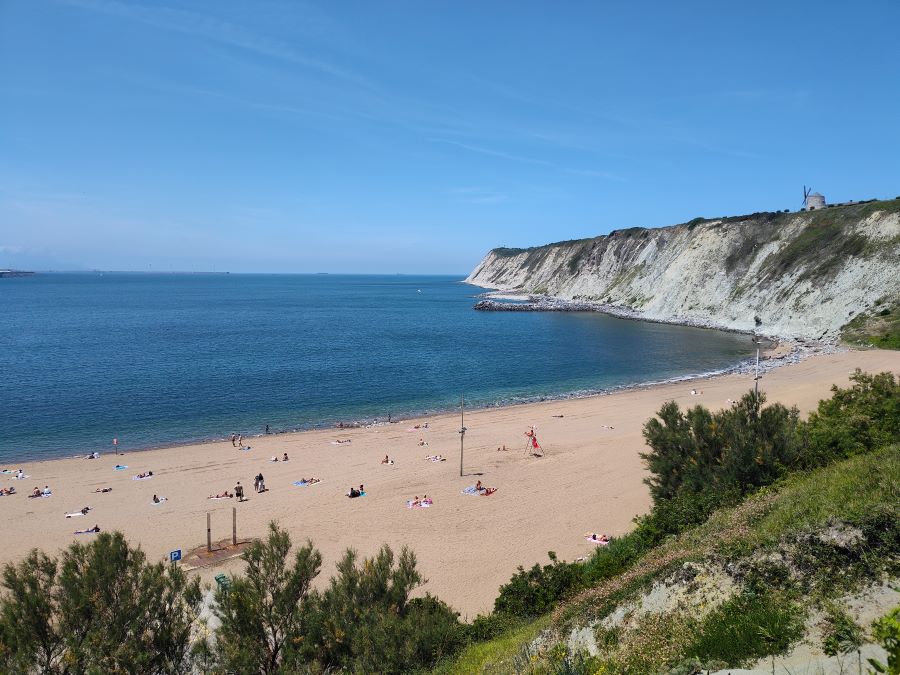
10. Bilbao beach areas
If you are looking for some beach time and enjoying the areas outside of Bilbao with easy reach from the local metro, consider visiting these fantastic beaches a short ride from the city center.
1. Playa de Sopelana (Sopela)
- Distance from Bilbao: About 30 minutes by metro
- Vibe: Popular with surfers and outdoor enthusiasts
- Features: Dramatic cliffs, strong waves, surf schools, beachside bars
- Good for: Surfing, paragliding, scenic coastal walks
2. Playa de Plentzia
- Distance from Bilbao: Around 45 minutes by metro
- Vibe: Family-friendly and relaxed
- Features: Calm waters, long sandy beach, promenade with cafes and restaurants
- Good for: Swimming, sunbathing, easy day trips with kids
3. Playa de Gorrondatxe (Azkorri)
- Distance from Bilbao: About 30–40 minutes by car or bus
- Vibe: More natural and less developed
- Features: Dark volcanic sand, grassy dunes, fewer crowds
- Good for: Nature lovers, quiet beach time, dog-friendly visits
4. Playa de Ereaga (Getxo)
- Distance from Bilbao: About 25 minutes by metro
- Vibe: Urban beach close to town
- Features: Sports facilities, beach bars (chiringuitos), views of the cliffs and marina
- Good for: Paddleboarding, volleyball, social atmosphere
5. Playa de Barinatxe (La Salvaje)
- Distance from Bilbao: About 30 minutes by metro or car
- Vibe: Wild and rugged
- Features: Popular with nudists, surfers, and hikers
- Good for: Surfing, cliff walks, naturism
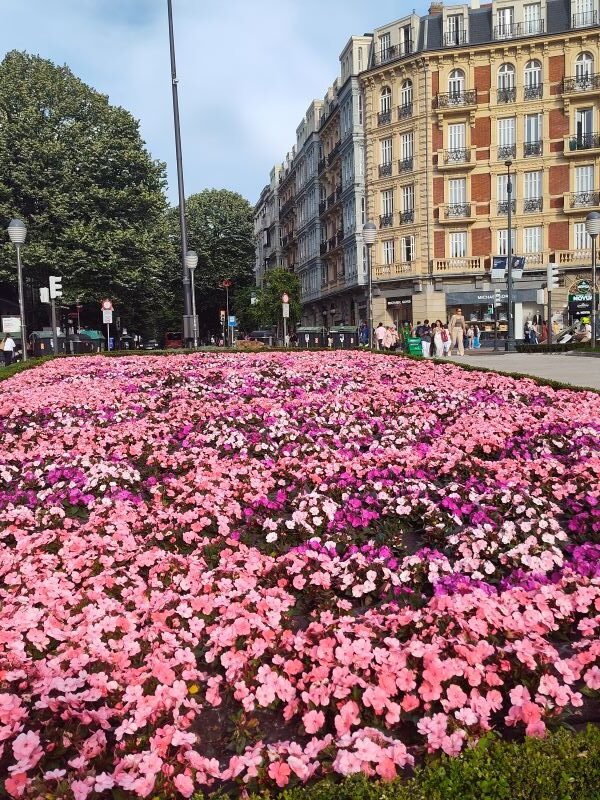
11. Visit the shopping venues and downtown district of Bilbao
Bilbao’s downtown district, known as El Ensanche or Abando, is the city’s commercial heart and a prime spot for shopping. The area blends elegant architecture with wide boulevards and is filled with stylish boutiques, department stores, and popular Spanish and international brands. Gran Vía, the main shopping artery, stretches through the district with everything from Zara and El Corte Inglés to upscale labels and local Basque designers. For more unique finds, nearby streets like Rodríguez Arias or Marqués del Puerto offer independent shops, artisan goods, and gourmet delicacies. The neighborhood also mixes shopping with culture—cafés, galleries, and stately buildings give it a refined, urban charm that makes strolling between shops feel like part of the experience.

Visit the shopping venues and downtown district of Bilbao street scenes
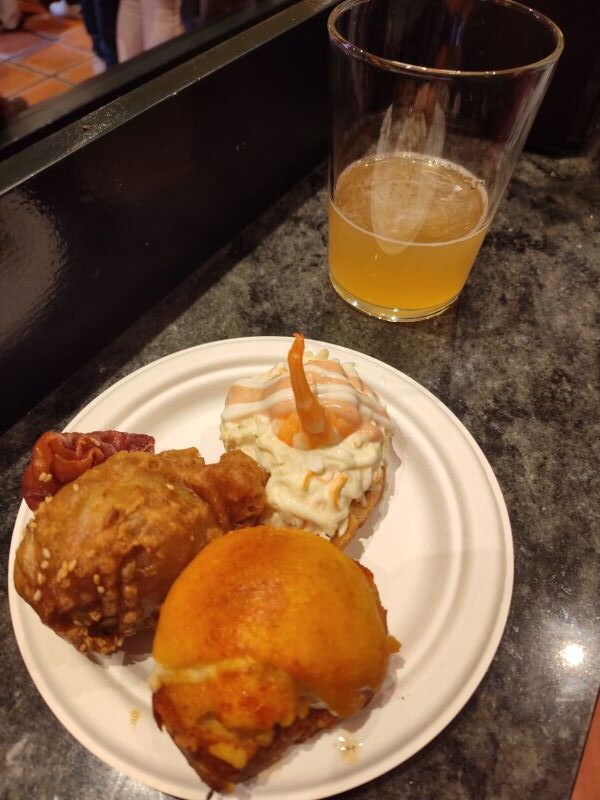
What local food to eat in Bilbao
If you are looking for interesting local cuisine, pintxos/tapas and drinks, check out these local foods to try in Bilbao, Basque flavors and must-try dishes:
1. Pintxos (Basque Tapas)
- What it is: Small bites typically served on bread, often skewered with a toothpick
- Where to find it: Bars across Casco Viejo and the city center
- Varieties: Gilda (anchovy, olive, and pepper), tortilla de patatas, grilled shrimp, morcilla (blood sausage)
2. Bacalao a la Vizcaína
- What it is: Salt cod in a red pepper and onion-based sauce
- Signature dish: A classic in Bilbao’s traditional kitchens
- Best for: A taste of local comfort food
3. Marmitako
- What it is: A hearty tuna and potato stew, flavored with peppers and onions
- Origins: Originally a fisherman’s dish
- Best enjoyed: In colder months or in traditional Basque taverns
4. Txipirones en su Tinta
- What it is: Baby squid cooked in their own ink with onions and spices
- Flavor profile: Rich, earthy, and intensely savory
- Often served with: Rice or crusty bread
5. Txuleton (Basque-Style Beef Steak)
- What it is: A large, bone-in ribeye steak, grilled and served rare
- Where to get it: Traditional Basque grill houses (asadores)
- Best shared: Ideal for meat lovers and group meals
6. Idiazabal Cheese
- What it is: Smoked sheep’s milk cheese from the Basque Country
- Pair with: Quince paste or local cider
- Often found in: Cheese boards, pintxos, or gourmet markets
7. Basque-style Cheesecake (Tarta de Queso Vasca)
- What it is: Burnt on the outside, creamy in the center
- Texture: Light, fluffy, and rich without a crust
- A must for: Dessert lovers looking for something unique
8. Gâteau Basque
- What it is: A pastry filled with either almond cream or black cherry jam
- More common in: French Basque Country but found in some bakeries
- Good for: A sweet snack with coffee
9. Drinks to Try
- Txakoli: Slightly sparkling, dry white wine often served with seafood
- Basque Cider (Sagardoa): Tart and natural, traditionally poured from a height
- Patxaran: A sweet, anise-flavored liqueur made from sloe berries
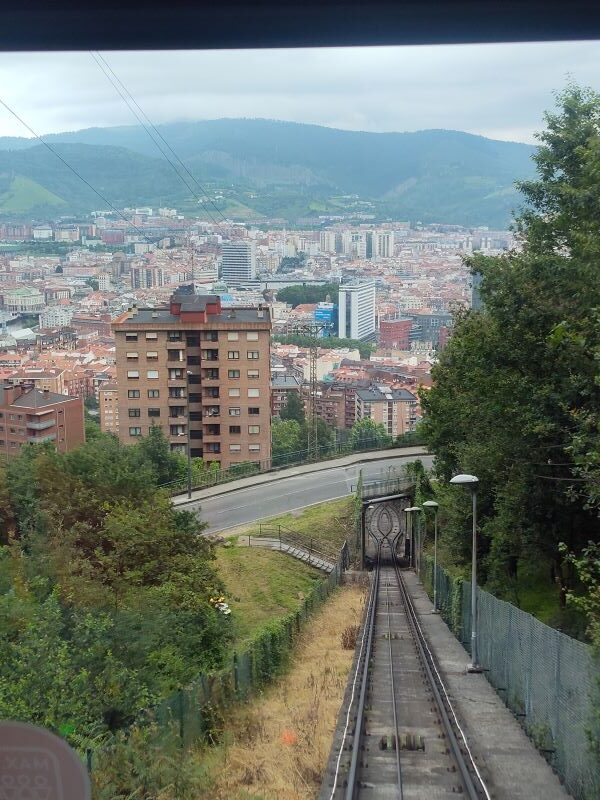
Further Reading on visiting Bilbao
If you want to plan and learn more about this fascinating city and region, check out these other posts below:
Visit Bilbao’s Old Town Center
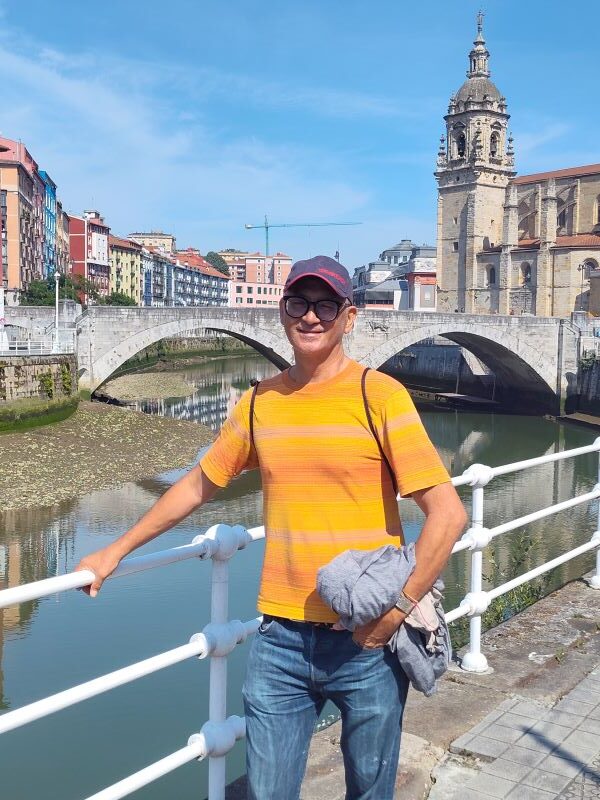
About author – Noel Morata
After relocating from the United States to Andalusia in 2020, I’ve made it my mission to discover every corner of Spain. Based just east of Granada, I’ve spent over 12 months exploring Valencia province and the rest of Spain, including multiple extended visits to Valencia throughout different seasons. My background in Spanish cultural studies and five years of residence in southern Spain have given me unique insights into the region’s historical significance, local customs, and culinary traditions.
I regularly update my guides with the latest information gathered through personal visits and relationships with local tourism officials, always seeking what’s new and exciting in each destination. As a self-proclaimed foodie, I’m passionate about discovering authentic local markets and regional specialties.
I love visiting historic districts, and Bilbao’s old town is quite spectacular with ancient churches, architecturally rich buildings, plazas, food markets and shopping venues to explore. I share my top favorite to visit in this district.
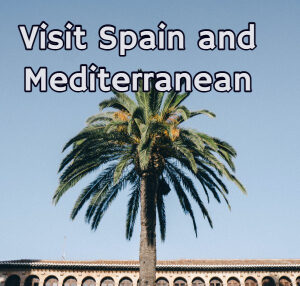
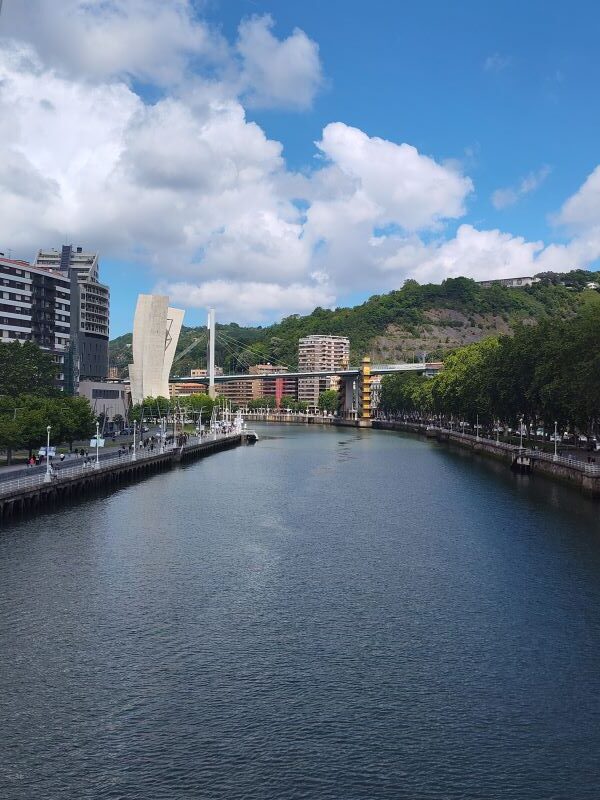
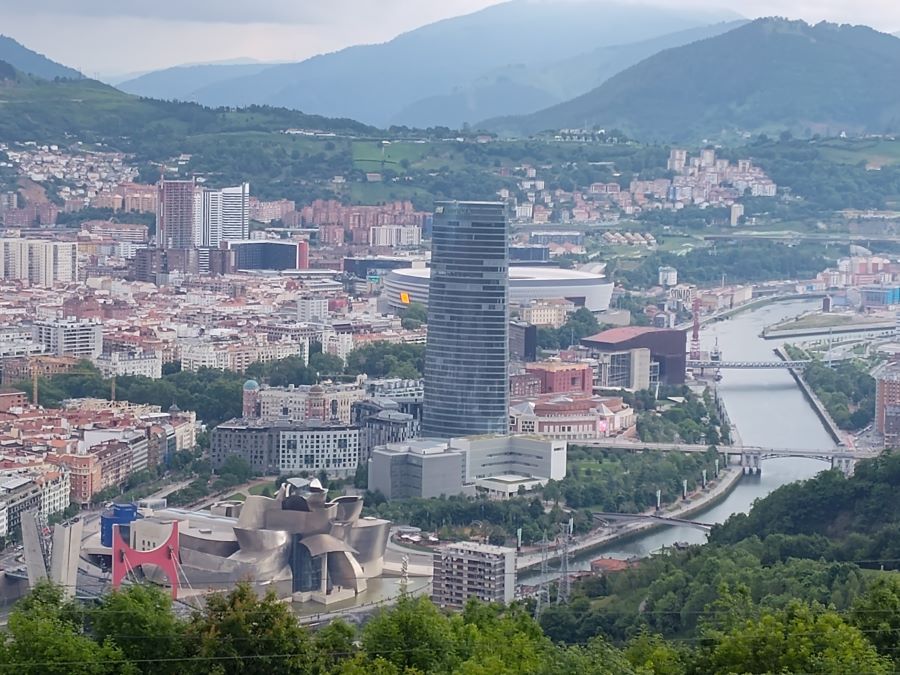
1 thought on “Bilbao Spain”